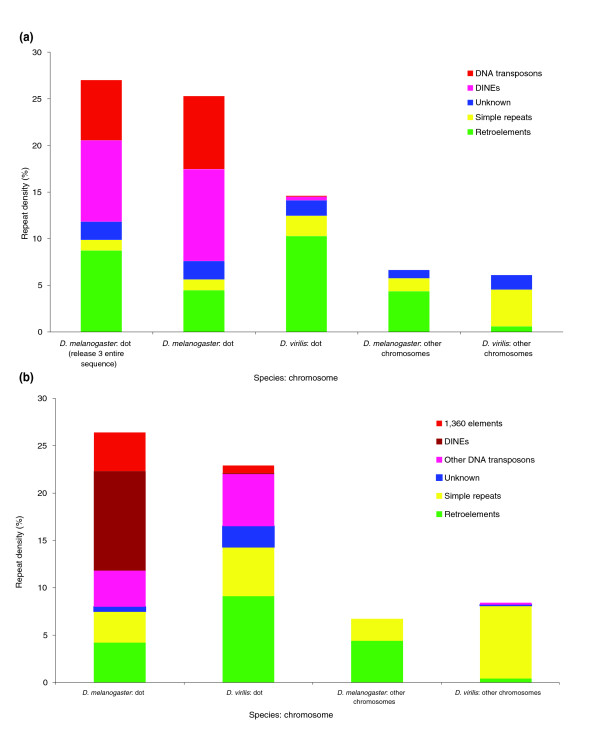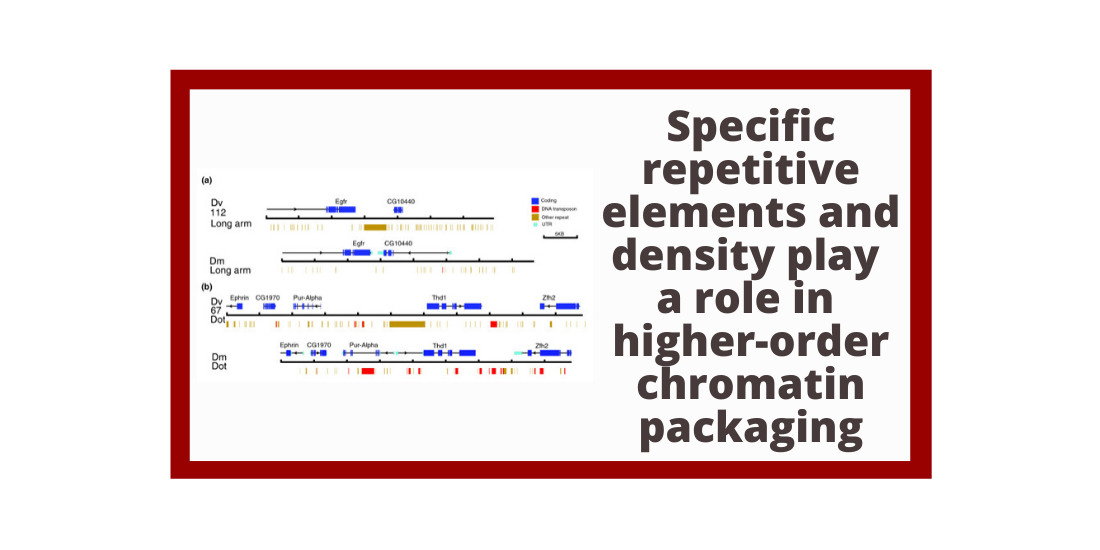Abstract:
Background: Chromosome four of Drosophila melanogaster, known as the dot chromosome, is largely heterochromatic, as shown by immunofluorescent staining with antibodies to heterochromatin protein 1 (HP1) and histone H3K9me. In contrast, the absence of HP1 and H3K9me from the dot chromosome in D. virilis suggests that this region is euchromatic. D. virilis diverged from D. melanogaster 40 to 60 million years ago.
Results: Here we describe finished sequencing and analysis of 11 fosmids hybridizing to the dot chromosome of D. virilis (372,650 base-pairs) and seven fosmids from major euchromatic chromosome arms (273,110 base-pairs). Most genes from the dot chromosome of D. melanogaster remain on the dot chromosome in D. virilis, but many inversions have occurred. The dot chromosomes of both species are similar to the major chromosome arms in gene density and coding density, but the dot chromosome genes of both species have larger introns. The D. virilis dot chromosome fosmids have a high repeat density (22.8%), similar to homologous regions of D. melanogaster (26.5%). There are, however, major differences in the representation of repetitive elements. Remnants of DNA transposons make up only 6.3% of the D. virilis dot chromosome fosmids, but 18.4% of the homologous regions from D. melanogaster; DINE-1 and 1360 elements are particularly enriched in D. melanogaster. Euchromatic domains on the major chromosomes in both species have very few DNA transposons (less than 0.4 %).
Conclusion: Combining these results with recent findings about RNAi, we suggest that specific repetitive elements, as well as density, play a role in determining higher-order chromatin packaging.

Slawson EE, Shaffer CD, Malone CD, et al. Comparison of Dot Chromosome Sequences from D. melanogaster and D. virilis Reveals an Enrichment of DNA Transposon Sequences in Heterochromatic Domains. Genome Biol. 2006;7(2):R15. doi:10.1186/gb-2006-7-2-r15

